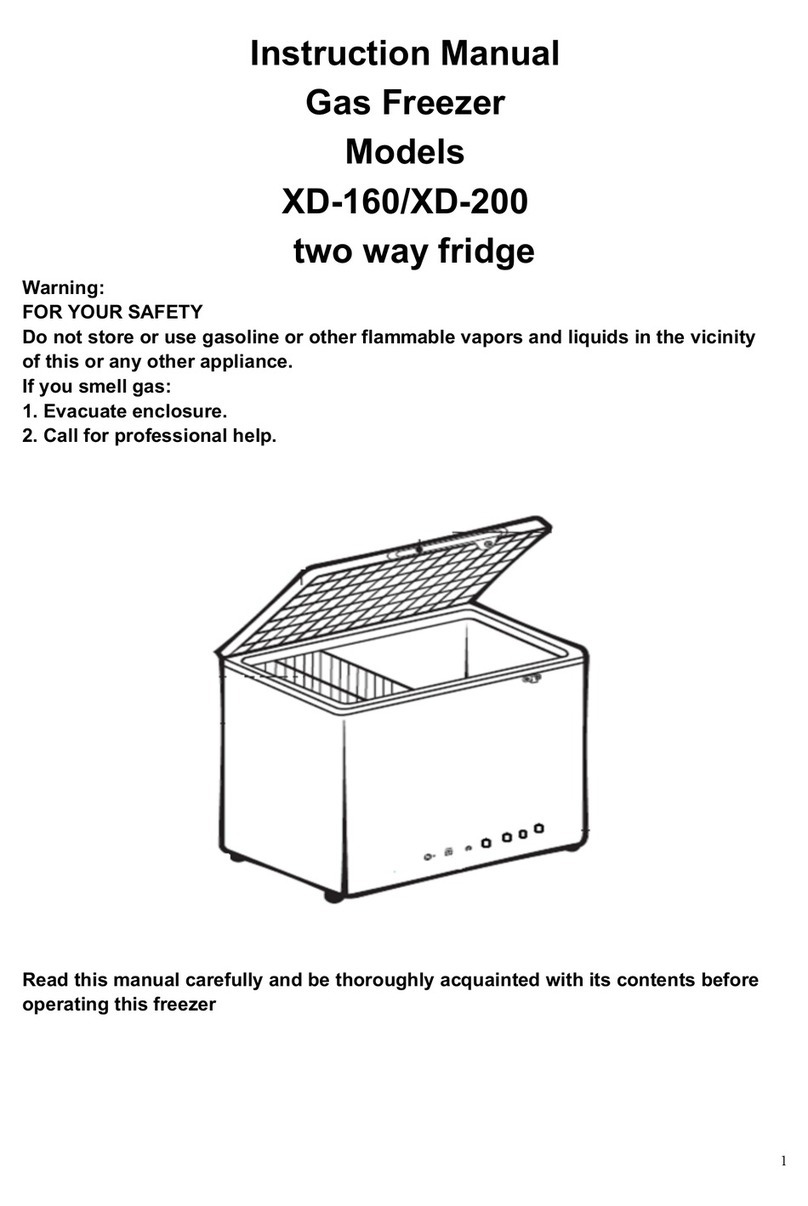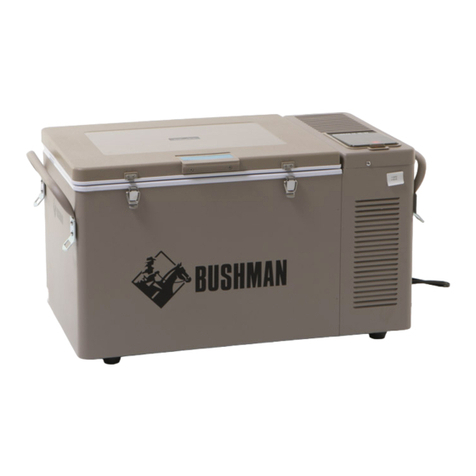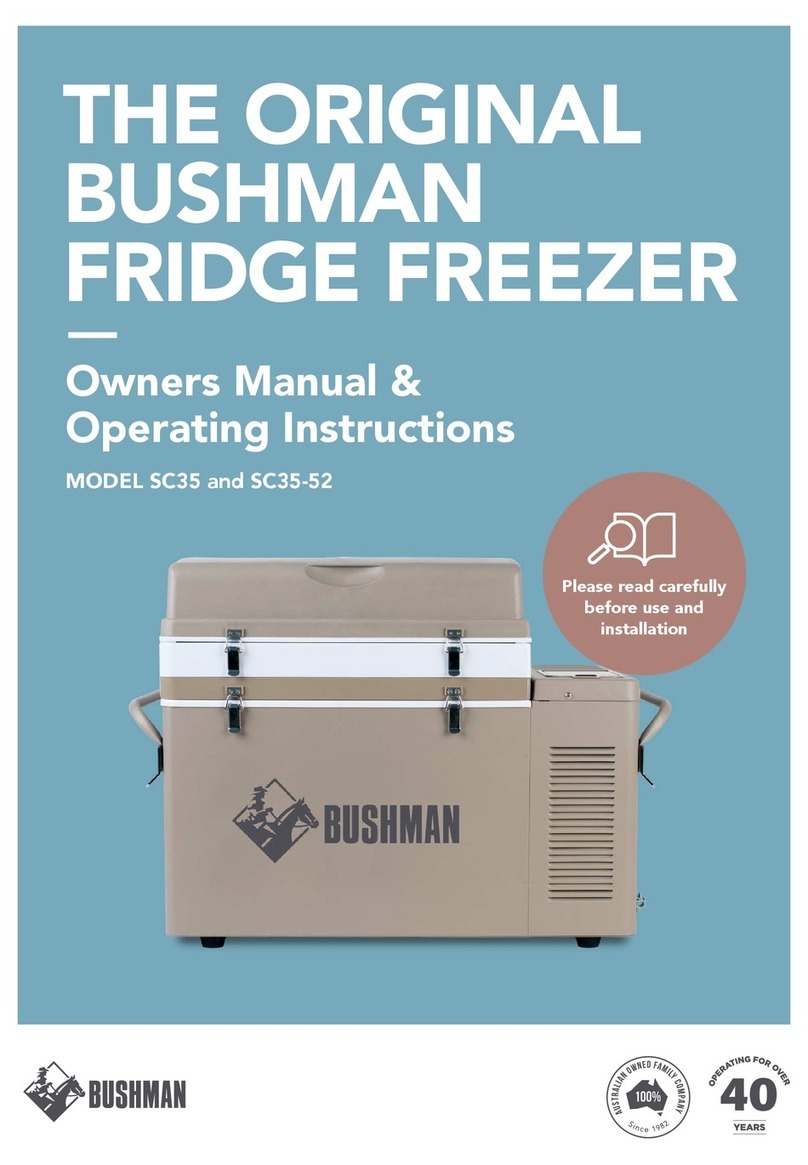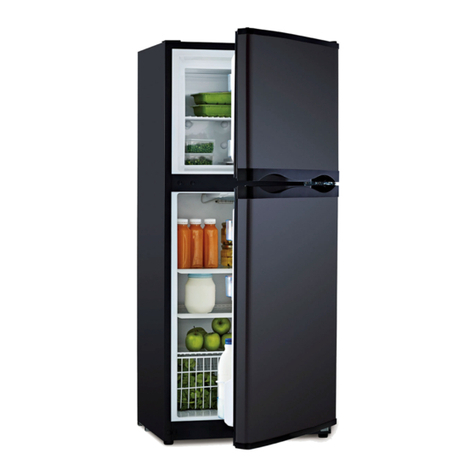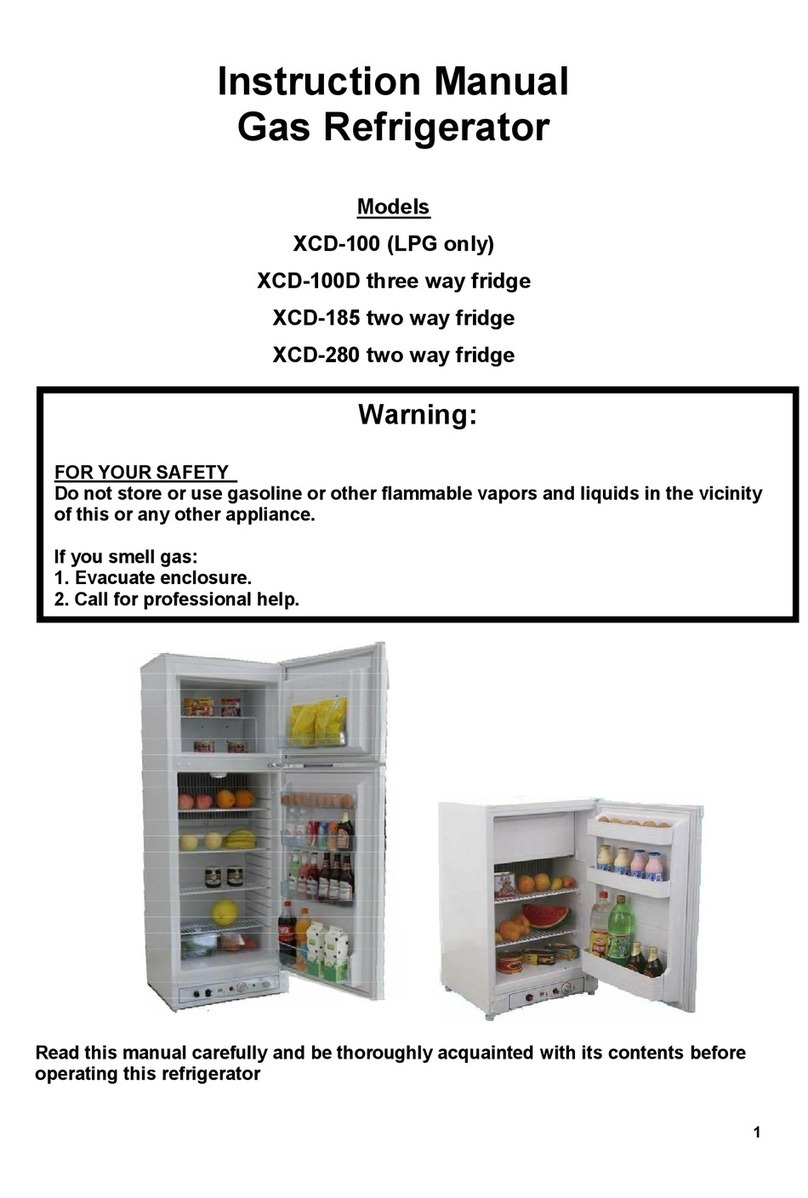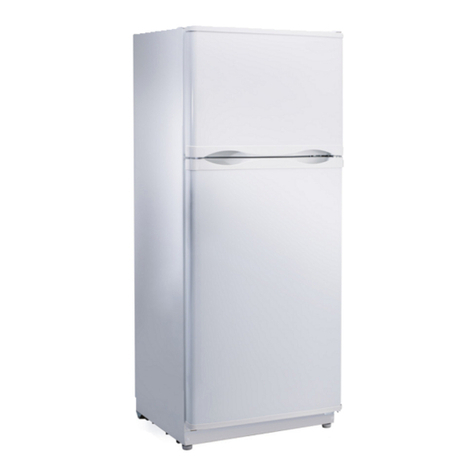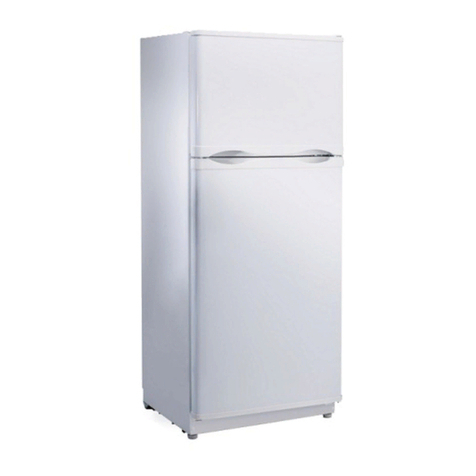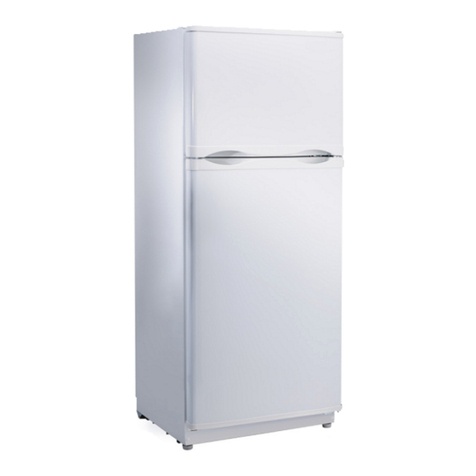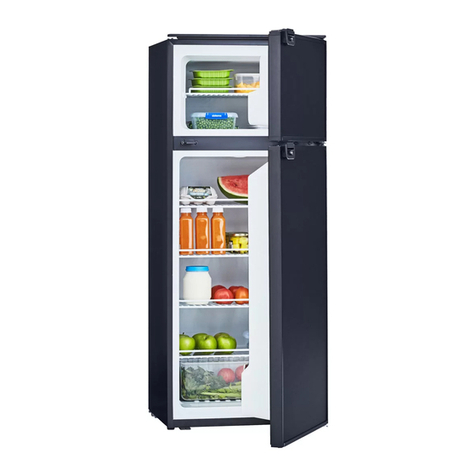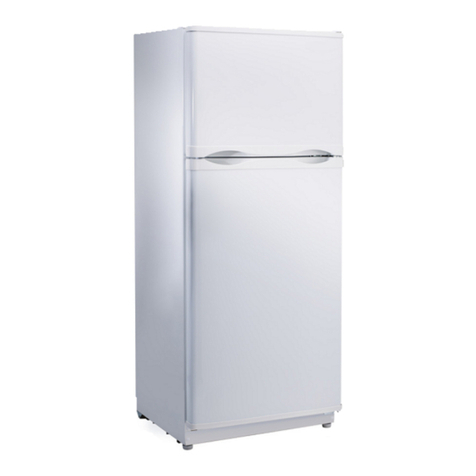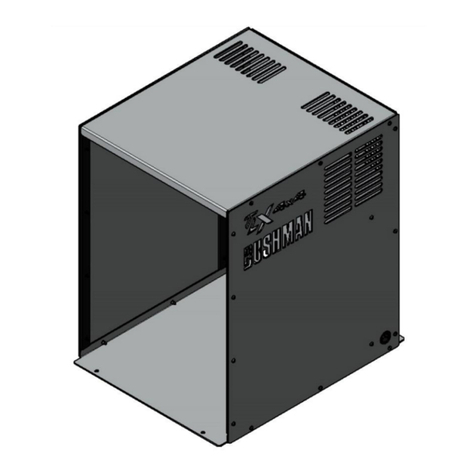
MOVING THE DOOR HINGES TO THE LEFT-HAND SIDE
To change the hinge side, unscrew the door hinges from the fridge cabinet, move to the other side and re-affix using
the same screws. There is a black washer on the bottom hinge, this must stay in place.
MOVING THE DOOR HANDLE
1. Remove the 2 screws which hold the door handle in place. Access is provided under the logo sticker. You can
more easily remove the sticker by applying moderate heat from a hair dryer.
2. Gently lift the door handle off.
3. Reposition the door handle on the preferred side.
4. Drill 2 small (2mm) pilot holes through the door handle for the original screws.
5. Reaffix the door handle using the original screws.
6. Reapply the logo sticker onto the door handle by applying moderate heat to the sticker.
7. Use the supplied DC-X Series sticker to cover the old screw holes.
8. Check that the plastic door latch is flush with the top metal rail when the door is closed. If there is more than 1-
2mm of movement, you will need to adjust the position of the top metal rail. To do this, unscrew the top metal
rail and move it backwards so that the plastic latch is just touching. Reaffix in this position. See diagram below:
CORRECT 0-1MM GAP INCORRECT 2MM+ GAP
RUBBER SEALS
1. There are magnets inside the rubber seal which pull towards the metal fridge cabinet to keep it airtight.
2. After you have adjusted your door latch, check to see that the rubber seal is making contact with the fridge
cabinet on all 4 sides. If there is even a small gap, this will affect the performance of your fridge.
3. Starting from a corner, gently heat up the rubber seal with a hair dryer or light heat from a heat gun (be careful
not to overheat the rubber or it will melt). As the rubber heats up, the magnets inside will pull the seal towards
the fridge cabinet. Slowly work your way along the rubber from one corner to the other until it is fully sealed.
REPLACING THE FRONT DOOR PANEL
1. Follow steps 1 to 2 under “Moving the door handle” above.
2. Gently remove the bottom door profile which supports the door panel. Using a screwdriver gently lever the
bottom door profile outwards only. Do not lever it down.
3. Gently slide the original door panel down and out of the door.
4. Slide the new door panel upwards and into place.
5. Reposition the bottom door profile to be flush.
6. Continue from steps 3 to 6 under “Moving the door handle” above.

